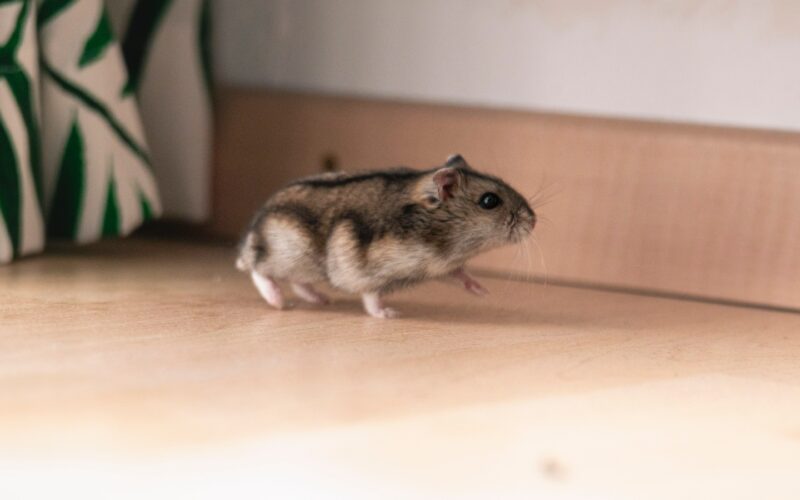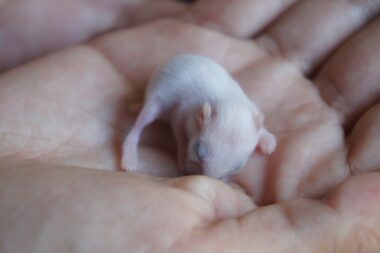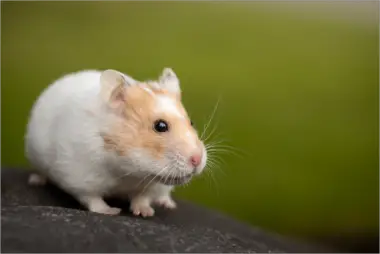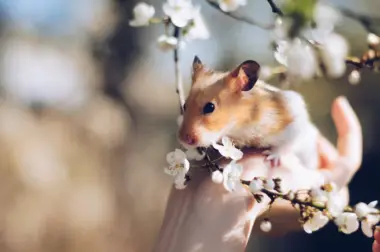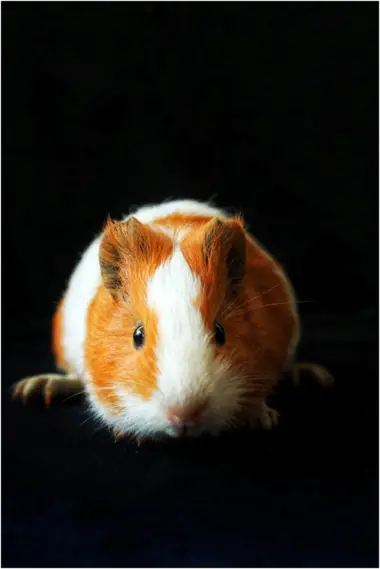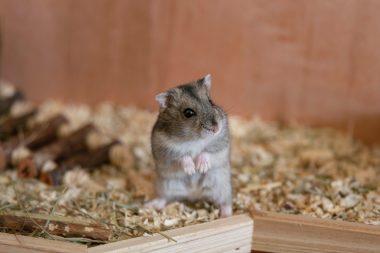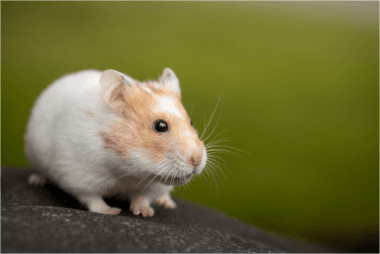Ever wanted a Russian Dwarf Hamster as a pet, here’s everything you need to know about them. These hamsters are often referred to as fancy hamsters for their different attractive colors. We’ll look at everything about the Russian Dwarf Hamster from the appearance, their characters, where they’re found, what they eat and how to take care of them. The behavior of the hamster and points to keep in mind before and after getting the Russian dwarf hamster will also be reviewed.
General information
The Russian dwarf hamster belongs to the Phodopus genus of the hamster species. It is also known as the winter white dwarf hamster, Djungarian hamster, stripped dwarf hamster, Siberian hamster or the Siberian dwarf hamster. It’s appearance is typically thought with a dark gray stripe on its dorsal area and furry feet. They grow up to three to four inches in size as adults.
An interesting phenomenon with the Russian dwarf hamster is that as the winter approaches, the dark fur gets replaced with white fur. Though if kept indoors under artificial lighting the hamster remains its dark fur self, and displays the change in fur out in the wild. The hamster originates from the wheat fields of Kazakhstan, the meadows of Mongolia and Siberia and the birch stands of Manchuria. It is from here that it inherits its distinct fur changing habit.
Classifications and appearances
There are two species of the Russian dwarf hamster: the Winter White and the Campbell’s dwarf hamster. They both look similar and are often confused among each other.
The White Winger dwarf hamsters are also known as Siberian Hamsters or the Djungarian hamster, found in Siberia and Central Asia. On average, they can live from 1 to 3 years but live shorter live spans in the wild. These hamsters have the ability to change its color from dark gray to white in winters in the wild but don’t change colors in domestic settings. They come in different varieties including the marbled, sapphire pearl, sapphire and pearl colors. Their usual gestation periods range from 18 to 25 days and breed after 4 to 6 months. They typically have four to eight pups.
The Campbell’s Russian Dwarf Hamster are usually found in China, Russia and Central Asia. They are similar in appearance to the Winter White save for a couple of characters. They have smaller ears and lack a dark patch on the crown of their head. Campbell hamsters don’t turn white in the winter and have a low tolerance to cold climates. You will find these kinds of hamsters exercising and taking shelter in the cold. They live for two to two and a half years as domestic pets. Their gestation period is between 18 and 20 days and breed after three to four months.
Health and breeding
The Russian dwarf hamster are available on pet markets in Europe, Japan and North America and are prone to injuries. They are susceptible to tumors and receive injuries on the cheek pouch by sharp objects. They also have other health issues like bite wounds, broken teeth, constipation, dehydration, diarrhea and ear problems. Despite the issues, with proper care and diet they can be a person’s favorite pet.
They also reproduce at a fast rate. In an indoor setting with artificial light, the dwarf hamsters are likely to breed all year round. In the wild with natural light- dark cycles, they breed only in the spring and summer. Breeding season often makes the hamster aggressive. Females hamsters tend to attack the male to protect her babies. The male will hide in a hole or away from the female to escape any attack. Due to their ability to breed fast, they are not considered a threat to extinction.
As pets
As a pet, the Russian dwarf hamsters are energetic creatures. They play at night and rest in the day. With daily handling, they tend to bond to pet parents and can become cuddly buddies. Dwarf hamsters are safe to handle but pet owners should be careful during breeding season as they tend to get aggressive.
They chew on objects using their incisor teeth, so giving them something to chew on regularly is a good idea. Another point to keep in mind is never to surprise a sleeping hamster. You must also never squeeze the body of the hamster.
Allot ample space for their living place. When building the living space ensure that you use 1 to 2 inches (ca. 5 cm) of good quality paper bedding or crumpled paper. This is to ensure that even if the hamster eats it, it will get digested. Hamsters usually enjoy hiding in their places of residence. Having a running wheel for exercise is a must as well as having hamster toys and accessories.
As substrate, the bottom of the cage must have 2 to 3 inches (ca. 8 cm) of soft bedding. This has to be chemical and dye free paper of shavings. Avoid cedar and pine wood shavings as it may be toxic. Any wet spots have to be cleaned on a daily basis. A full bedding change has to be done weekly after scrubbing the enclosure with a mild soap and water.
The hamsters are nocturnal but might be active for short periods of time. They are also social species that can be kept together with each other. But adult hamsters tend to become territorial and fight. The hamsters must under no circumstance be exposed to other household pets including other hamster species. This will cause unnecessary stress and injury.

Feeding and care
When feeding the Russian dwarf hamster, you must ensure that it is a well-balanced diet. It should consist of high quality, nutrition filled pelleted food and a limited amount of grains. These could include vegetables, fruits or other grass hay.
Water is also most important to the hamster. Clean, fresh water is a must and it should be changed on a daily basis. It can be given through a sipper bottle or a shallow bowl.
Chocolate, caffeine and alcohol are strict no for a hamster as it could be toxic and lead to their death. It is important to remember to feed fresh food to your hamsters and have clean water available to it. It should be fed once a day, preferably in the evening. Vegetables and fruits given but not eaten within 12 hours should be discarded.
Always follow the label and your vet’s instruction in feeding the hamster. They should have food always available to them. Most owners put a full day’s worth of food in a ceramic bowl and discard it in 24 hours.
Supplementary foods after consultation with the vet can also be given. These may include greens, carrots, blueberries and oats. They should be kept away from the stable diet dish and discarded after few hours.
When it comes to the cleaning and hygiene of the Russian dwarf hamster, they should be kept clean but rarely require a bath. They can be spot cleaned with a damp washcloth or unscented baby wipes. The hamster enjoys a weekly dust bath to keep their fur clean, dry and oil free. A clean shallow dish can serve as a rolling ground for the hamster. In case there are concerns, you must always consult with a veterinarian.
Common health problems include injuries from falling, in cage fighting or run-ins with sharp objects, respiratory infections, wet tail, abscesses and skin issues. Other signs of illness include loss of appetite, lethargy, unsociable, excessive scratching or hair loss, sneezing, wheezing, discharge from the nose or eyes and abnormal droppings. If the hamster appears to be sick or injured remember to keep in a warm, quiet spot and contact your veterinarian.
Training the hamster
Training the Russian dwarf hamster is usually achieved using a concept called hand-taming. This is the primary training for owners with pet hamsters. Usually hamsters are not comfortable in handling. It is good to start handling hamsters when they are still young. It can be done by sitting on the ground in a secure place. This is crucial to ensure even if the hamster is dropped, its injury is not severe. It is also important to remember never to shake or squeeze a hamster. Holding out its favorite treat as a reward after training the hamster to sit in your hand will also work wonders.
Final words
Overall having a Russian dwarf hamster is a good decision to have as a pet. It is low maintenance save for the initial set up but requires daily attention and should be dealt with delicately. Primary costs for its upkeep will likely be higher during winters due to its diet and bedding. Chew sticks, nests and toys have to be replaced periodically.
They are interesting and good-natured pets and are good for people who have never had pet hamsters. Their small and quick characters however, means you might find it difficult to handle. They are also nocturnal and interacting with them during the day may be a problem.
